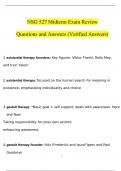Samenvatting
Cognitive Neuropsychology | Zeer Uitgebreide Samenvatting (NL) Boek & Hoorcolleges
- Instelling
- Tilburg University (UVT)
Een zeer uitgebreide Nederlandse samenvatting van het major/minor vak Cognitive Neuropsychology. Zelf heb ik het boek gelezen, uitgebreid samengevat en alle hoorcolleges samengevat. Dit document is een integratie van beide. Let wel: Hoorcollege 1 is gedeeltelijk NL/ENG, de rest is gewoon in het N...
[Meer zien]















